¶ Setting up Microsoft Remote Desktop on a Mac
- In order to get started with Microsoft Remote Desktop, you must begin by downloading it from the Mac App Store. Click the blue “App Store” icon in your dock.
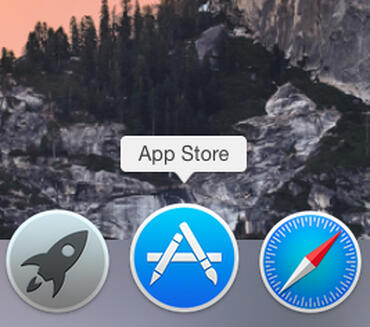
- Once you’ve accessed the Mac App Store, use the search bar at the top right of the screen to search for “Microsoft Remote Desktop.” The first search result should be what you’re looking for. To begin the download, click the blue “Get” button. This app is free, so no price will be listed.

- Next, open the application by clicking through the grey “Launchpad” icon and clicking on the Remote Desktop app icon. Or, you can use the searchlight feature by clicking the looking glass at the top right of your home screen, or by using the shortcut Command + Space Bar, and searching for “Microsoft Remote Desktop.” Opening the app should look like this:
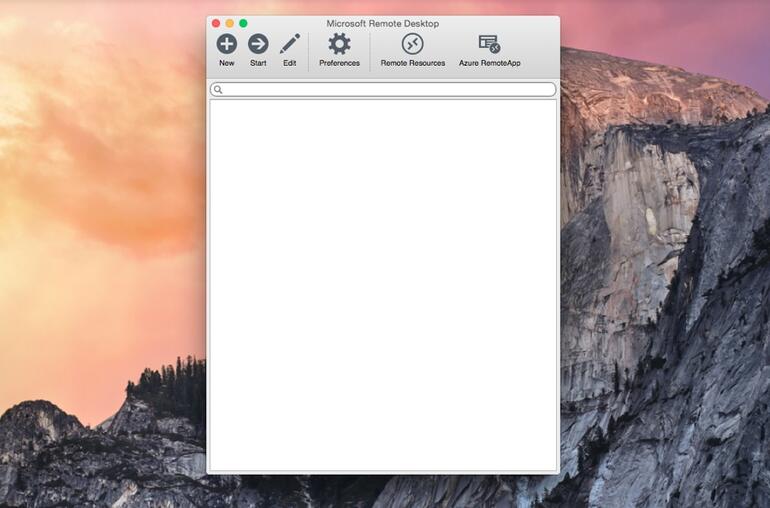 rdc3.jpg
rdc3.jpg
- If you think you’ll be frequently using this remote desktop connection, now would be a good time to set it in your dock. Right click (control + click) on the icon, mouse over “Options,” and click “Keep in Dock.” This will keep you from having to look for the icon every time you need to use it.

- Click the “New” button at the top left of the Microsoft Remote Desktop screen. You’ll be prompted to fill in quite a few fields.
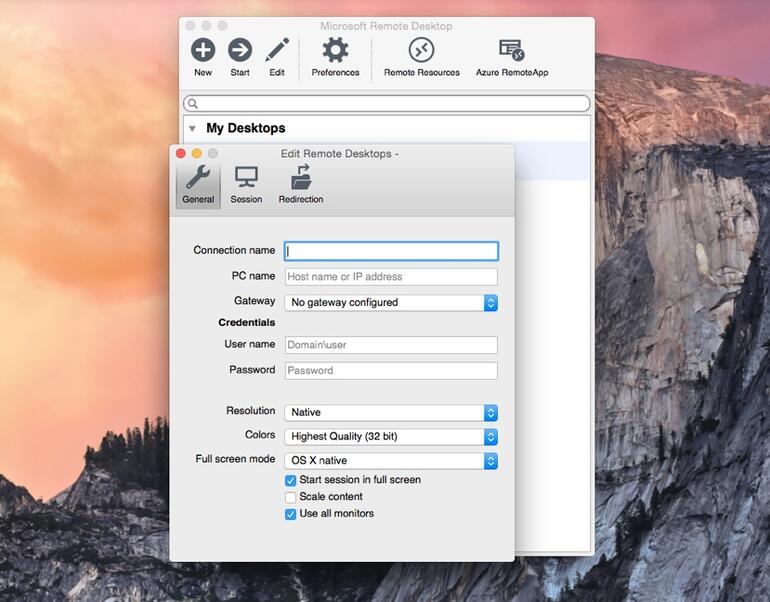
-
The first thing you’ll need to input is the connection name. This is simply what you want to call the connection and it has no real bearing on the connection itself. For example, you could call it “John’s work computer,” or “Jennifer’s PC.”
-
Next, you’ll need to input the server (PC Name) - This can be retrieved by requesting it from Secure-ISS Support.
-
Credentials is where you will type in the domain, username, and password for the target PC so you can log in through the remote connection. Resolution, colors, and full screen mode are all personal preferences for how you want the remote desktop to launch on your machine. If you’re not sure, start with the standard settings and go from there.
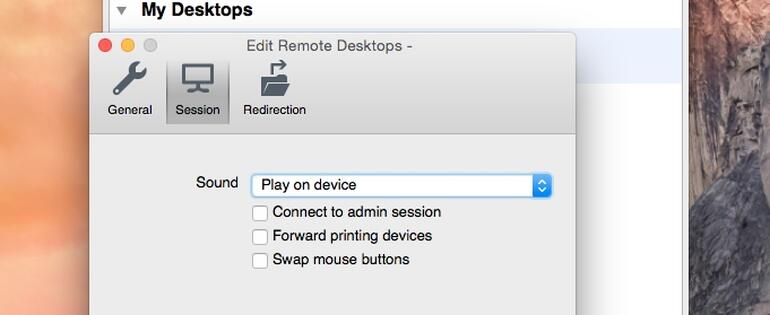
-
If you want to configure peripheral devices for your remote desktop, you can find options for that under the middle tab, “Session.”
-
The first choice is a drop-down menu for sound. You can disable sound, have it play on the remote PC, or have it play on your Mac. If you want to connect to an administrator session on a Windows server, click the box next to “Connect to admin session.”
-
The next option to “Forward printing devices” will make your local printers available during your remote desktop session. “Swap mouse buttons” will allow you to use left click commands with a right-click Mac mouse.
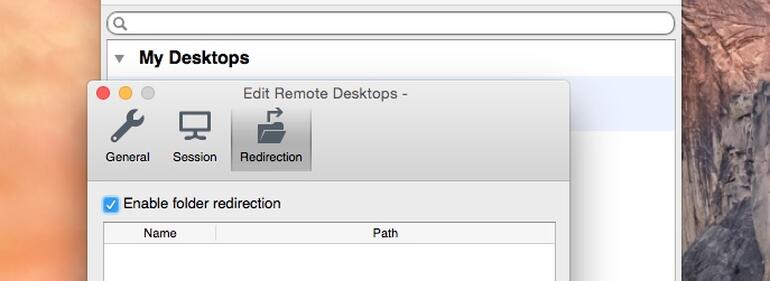
-
The last tab at the top of the window is “Redirection.” This is where you would choose a local folder you wanted to be available during your remote session. Click the “+” button, choose a name for the folder, and input the folder’s path to have it available.
-
When you are finished configuring your remote desktop, click the red close button at the top left of the dialog box and your new remote desktop will be added. To start a session with that desktop, simply double-click it to begin.
-
If you want to edit, duplicate, export, or delete that remote connection, right-click (control + click) on the desktop name to access those options.
¶ Printer Redirection not Working
At the time of writing this entry (November 2023) there is a know issue with redirecting printers from Mac devices onto windows servers. If the Mac device is running the Sonoma (14.0 or later) operating system Apple has turned off PostScript support. This breaks the printer redirection. Microsoft has released a beta version of their Microsoft Remote Desktop software that fixes this issue (Version 10.9.4 (2160) or later). This version can be downloaded from the below link.
Currently this fix is only supported when you are connecting into a device running Windows 10 or later. This means this fix does not work for our 2008 and 2012 servers.